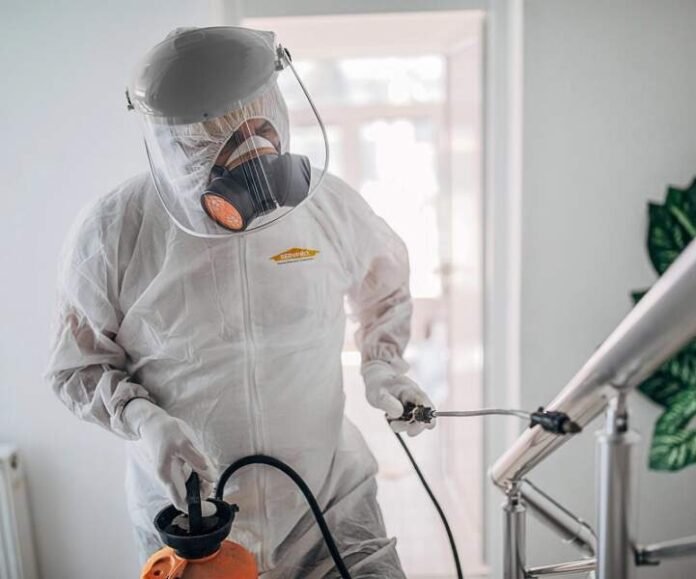Watch about any detective series on TV, and you will see a high-stakes crime scene with forensic experts in hazmat suits behind a yellow tape barrier as they sort through the aftermath of a violent, grisly offense. And sure, crime scene clean-up is not a job for weak stomachs — but it’s also not as melodramatic as Law & Order might have you think.
Let’s zoom out from this Hollywood version and explore what crime scene clean-up is like. From all the unique tactics crime scene cleaners use to sanitize a hazardous area to the various emergency situations these professionals are called in for to other details that make this job so fascinating, here’s what you never know about crime scene clean-up.
Crime Scene Clean-Up Isn’t Only for Homicides
While crime scene technicians do encounter assaults or murders, the bulk of their time is spent dealing with situations like industrial accidents, vehicle collisions, traumatic injuries, biohazard leaks, or illicit substance production. Even suicides or natural cause deaths (if the person dies alone) often fall under their purview. Here are just some of the remediation services that crime scene cleaners have been trained to perform:
- Removal of fingerprint powder or other chemicals used to collect evidence
- Elimination of harmful residue from tear gas, mace, or fire extinguishers
- Sterilization of infectious bloodborne pathogens from traumas or fatalities
- Disposal of blood spatter, tissue remnants, fluids, or other bodily materials
- Sanitation of volatile or toxic chemicals used to manufacture illicit drugs
- Fumigation of odors from biohazardous solvents or human decomposition
There Is Way More to It than Removing a Body
The corpse must be removed for forensic examination in the immediate aftermath of a fatal crime or accident. But crime scene clean-up is about more than covering a body with a sheet and blocking off the perimeter with hazard tape. This only begins to scratch the surface of a crime scene technician’s job description. Often, the more pressing issue is removing infectious odors or contaminants that seep from the body.
To eliminate that residue, crime scene cleaners must sanitize all objects in the vicinity — from linens and upholstery to walls and flooring, to surfaces and furniture. They don’t use normal cleaning products either. A thorough crime scene clean-up will require EPA-certified solvents, OSHA-regulated protocols, or in some cases, even demolition tools. After all, any mess left behind can pose serious health and safety risks.
Interpersonal Skills Are Vital for this Job
Over a year, an estimated 2.55 million violent crimes occur in the U.S. — about 395 cases per every 100,000 residents. Each number represents a victim and the family members reeling from their loss. As such, crime scene technicians are called in to do more than clean and restore the area. They will often take on the role of a de facto grief counselor too. That’s where interpersonal skills come in.
Crime scene cleaners are on the frontlines of many traumatic events, which makes them some of the main points of contact that a victim’s friends or relatives will interact with. Due to this unique position, the job cannot be strictly business — technicians must enter the environment with compassion and sensitivity. Crime scenes leave painful scars, so it’s vital for those handling the clean-up also to hold space for the human cost.
Training to Be a Crime Scene Cleaner Is Weird
For such an intense role, you might envision a crime scene technician’s training to be different than most nine-to-fives — and that’s absolutely true. Case in point: crime scene cleaners are often exposed to the rigors they’ll encounter in the field by cleaning up a room full of pig’s blood in the training facility. It sounds bizarre, but this isn’t your average job.
Because that particular substance coagulates similarly to human blood, it’s commonly used to reconstruct crime scenes in tactical scenarios. In order to be successful, technicians must learn to navigate the harsh realities of an actual crisis. This job can take a physical, mental, emotional, and visual toll, so it’s important to recreate the training conditions as accurately as possible. If that involves pig’s blood, call it an occupational hazard.
Crime Scene Clean-Up: It’s Messy But Fascinating Work
Not everyone is cut out to enter the world of crime scene clean-up — it’s a labor-intensive job that requires both mental resilience and a stomach of steel. But regardless of whether you’ve set foot on a crime scene in real life, this work is fascinating to learn about. And for those who can handle the macabre, crime scene clean-up could be quite a lucrative career. Recent estimations place the U.S. market value for remediation services at $23.8 billion. Turns out…even the strangest, messiest professions still have their perks.
Read Also: 4 Reasons Behind Fentanyl’s Rise In Popularity



































































